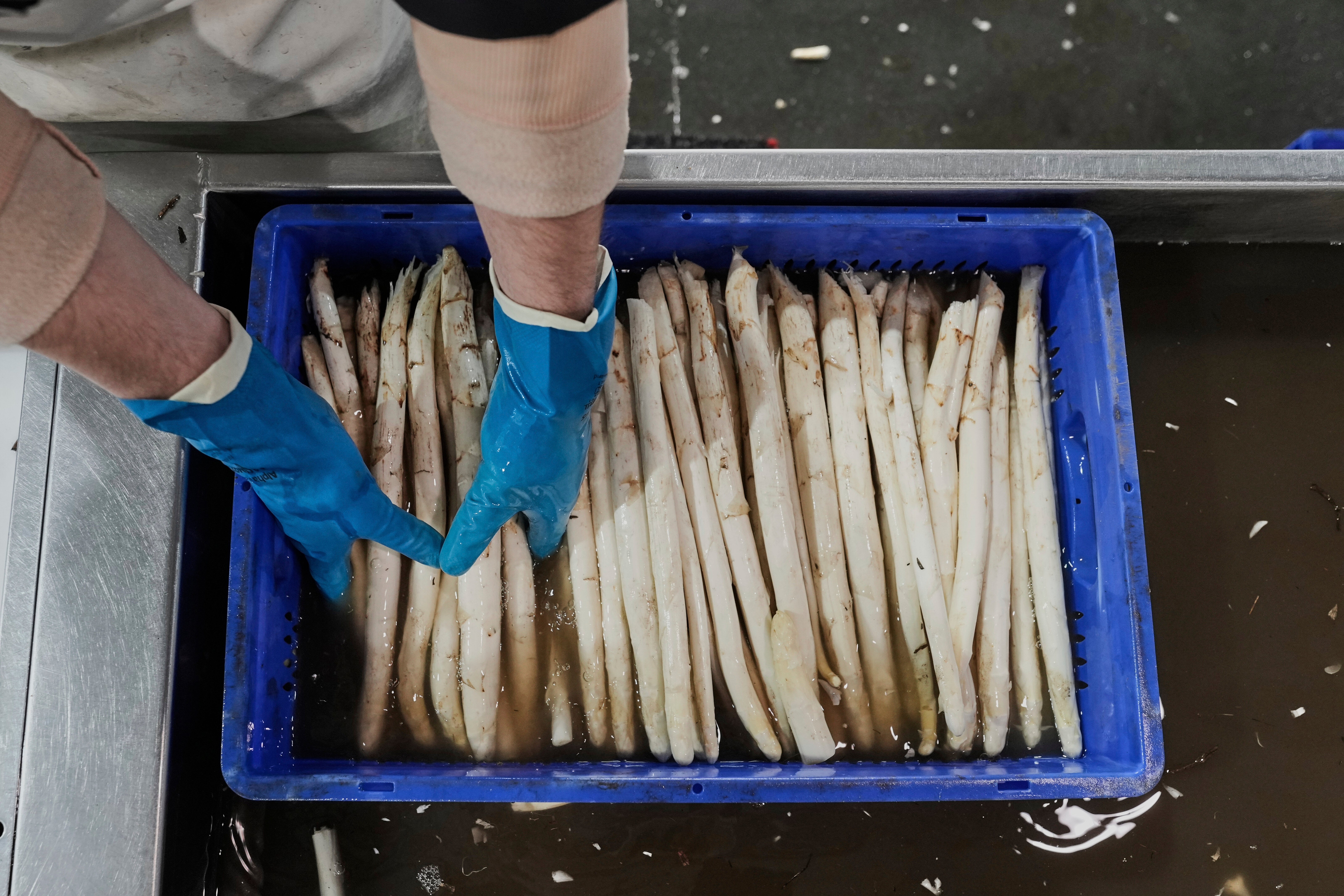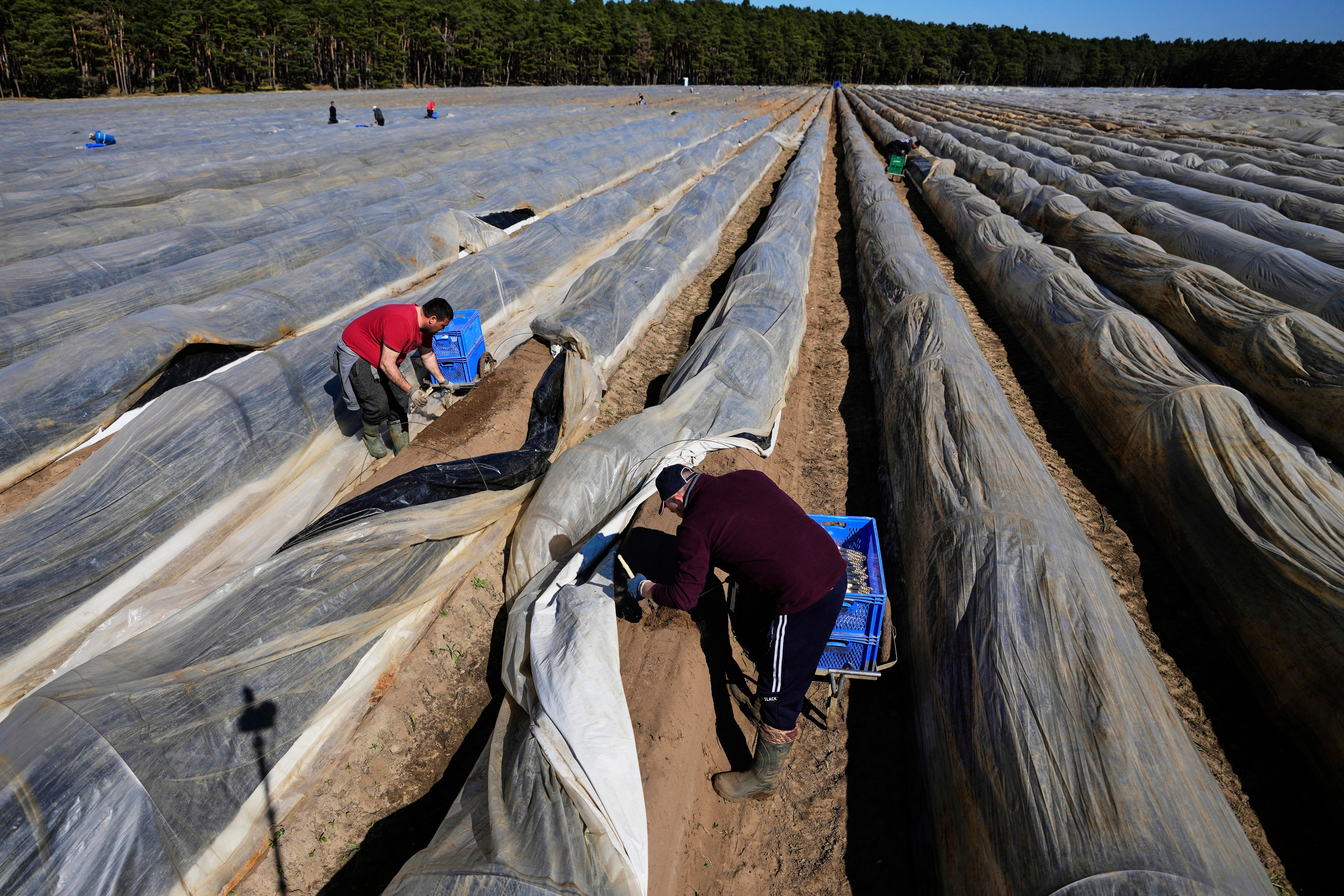The story of the “white gold” that takes control of Germany in spring

Germanyobsession with white asparagus He returned with the arrival of spring.
The favorite of the nation vegetables Sparca many debates, with a perfect accompaniment sauce: melted or Dutch butter? – to the combination of the ideal main course – smoked ham or Schnitzel? Is the outline also a point of dispute: boiled or peeled potatoes, sliced and fried with bacon and onion?
A question that divides asparagus fans is the correct way to eat tender shots. While some insist on fork and knife, the traditional label allows you to finge, provided they are immersed and clean in a bowl of hot water.
Despite the disagreements on preparation and consumption, there is an universal point of agreement: green asparagus are not simply correspondent for its white counterpart.
“The white asparagus are decidedly more delicate in taste,” explained Sven Sperling, 54 years old, savoring his first course of the season at the Jakobs-Hof Asparagus restaurant near Berlin. “It’s something very special. It is not possible to compare it with green asparagus.”
Asparagus are known as “white gold” in Germany

Beelitz is one of the most famous regions that cultivate asparagus in the country. The farmers of the city, which are located 30 miles south – west of the German capital, earn a living from “white gold” while the vegetables are sometimes called – a nod of the garment not only to its color but also at its high price. At the beginning of the season at the beginning of April he sells up to € 20 per kilo.
By the end of the season in June the price for asparagus can go down to € 10 per kilo – but nevertheless Spargel, as he is called in German, will not lose his luxury air throughout the season.
For GermansThe white asparagus are much more than simple food, it is a way of living, says Jürgen Jakobs, who manages the Jakobs-Hof restaurant, a farmers shop and cultivates the vegetables on 25 hectares of terra-circus the size of 300 football fields.
“Eating asparagus is a celebration,” Jakobs said in a recent interview with the Associated Press while looking at his apparently infinite fields in which Romanian workers were manually cutting the sprouts from the ground.
“Asparagus are the first spring vegetable. Asparagus are served on vacation: Easter, Mother’s Day, Whitsun,” he said. “Usually the family or friends are called and the table is set in a holiday.”
The ancient Romans considered vegetables an aphrodisiac
The passion for delicacy is legendary in Europe. The ancient Romans considered the vegetables an aphrodisiac and presumably brought them Central Europe. Here, the delicacy was initially cultivated only in the monastery gardens and only the nobility was allowed to eat it in the Middle Ages.

It was only at the end of the nineteenth century that farmers began to cultivate asparagus on the fields and therefore made it available for several people, however the vegetables still has a reputation in some way eligually until today.
The sprouts like sandy soil, which gives them the unique sweet and almost rich flavor of walnuts, said Jakobs, whose family has grown the vegetables for different generations.
White asparagus become underground covered with plastic sheet – when it is touched by sunlight that becomes purple, therefore green, and changes its flavor in a fuller and more bitter aroma.
The Germans are the world champions in eating white asparagus
Nobody eats more white asparagus of the Germans – Each citizen devours about 1.3 kg per year, which has translated into an annual collection of 105,000 metric tons last year, according to the country’s federal statistical office.

The Germans do not export white asparagus, they eat everything themselves, but import it from countries like Spain or Italy, which cultivate it mainly for export. The imported vegetables are mostly sold in supermarkets and are less expensive than our local ones, but also not so refined when it comes to flavor, said Jakobs.
White asparagus are mainly steam in water with a spoonful of sugar and a spoonful of salt and – unlike its green brother – it must be peeled before it is cooked. Also asparagus have a social component, because traditionally, the women of the house sat together for hours to detach many kilos of sprouts, chat and enjoy the mutual company.
Nowadays, some high -end food stores sell the delicacies that have already been peeled to shorten the preparation times. Health supporters praise the low quantity of calories of watery stems that are normally a little longer and thicker than their green brothers.
However, at the end of the day nothing is comparable to the real old -school experience, Sperling said, while he finished his dish with the vegetables that had just been cut only a few hours before by Jakobs’ team.
“Buy it fresh from the farm, detaching it alone at home and celebrating the preparation with the family during the weekend – it could not be better,” he said, adding with a nostalgic smile that simply has a flavor of “childhood memories”.




